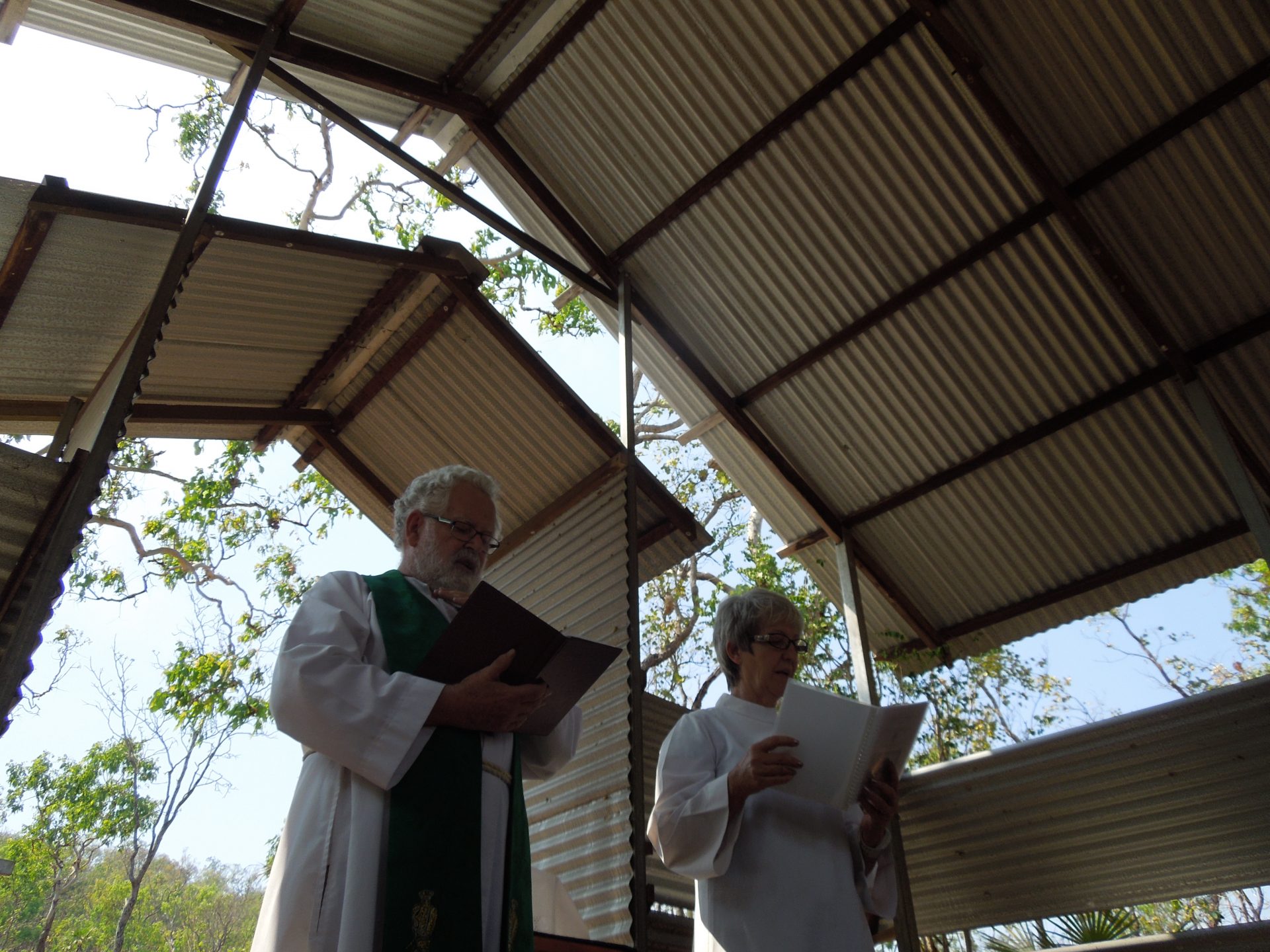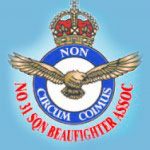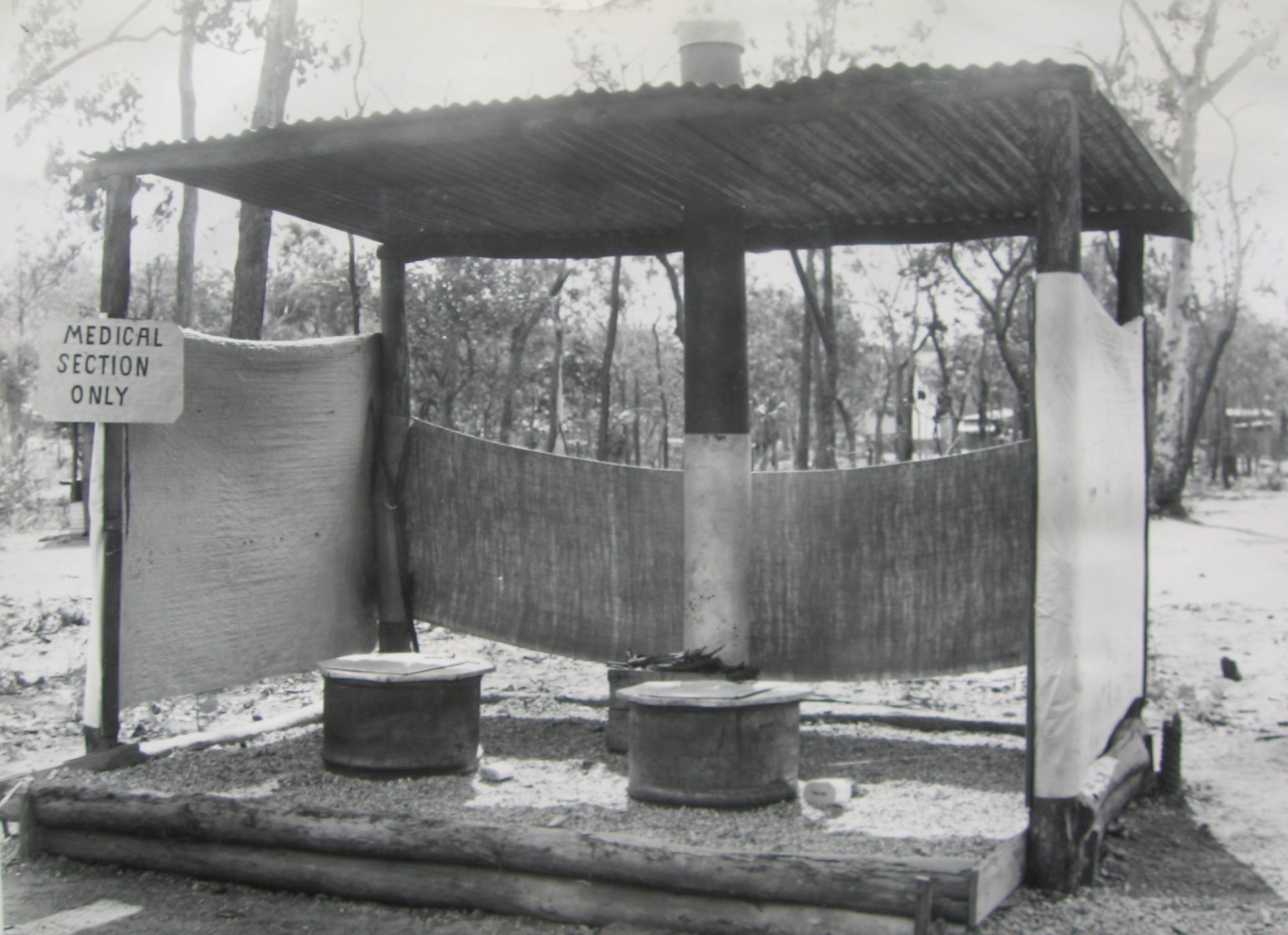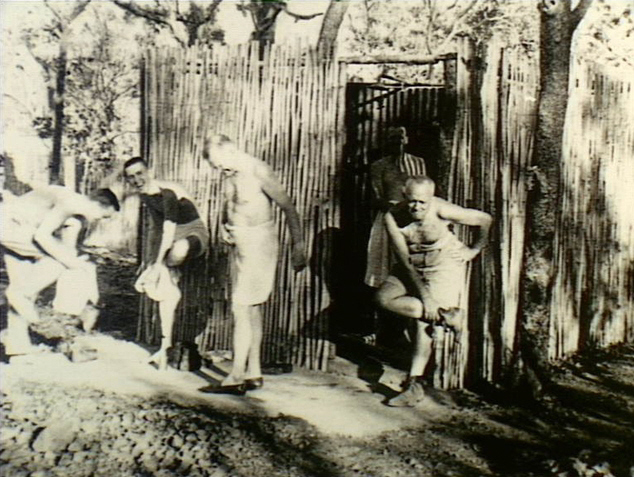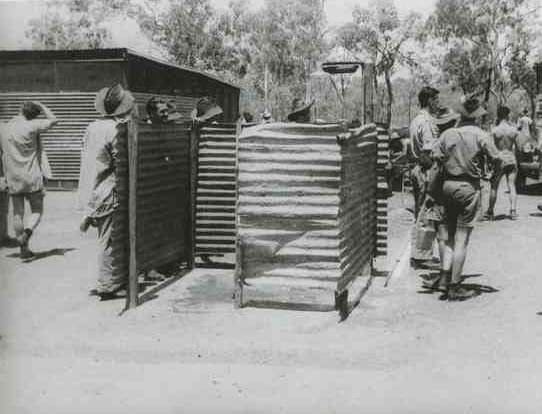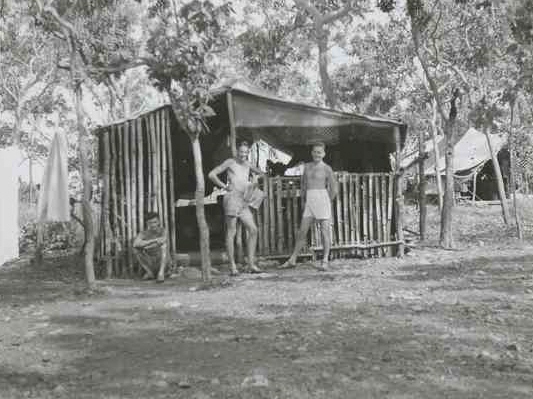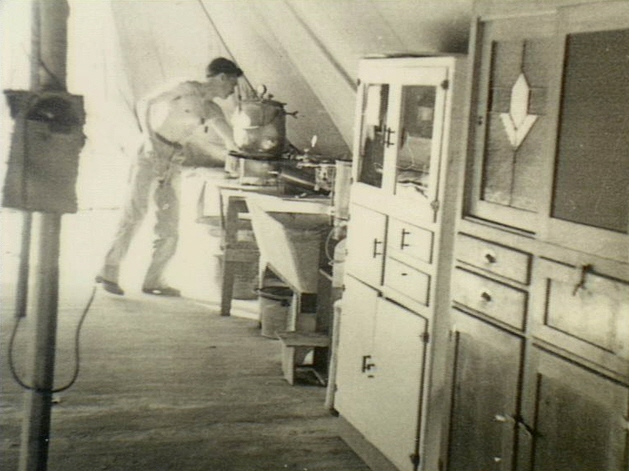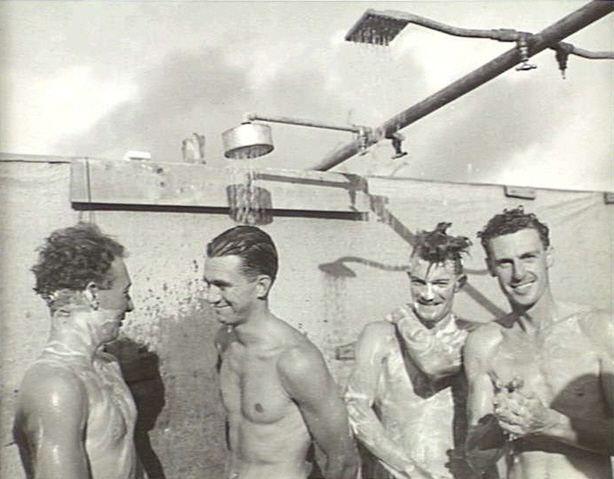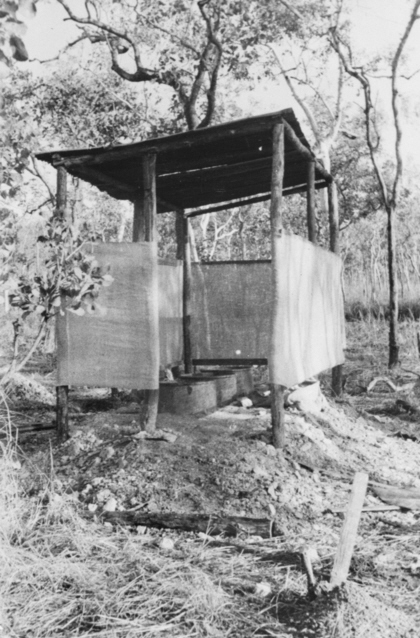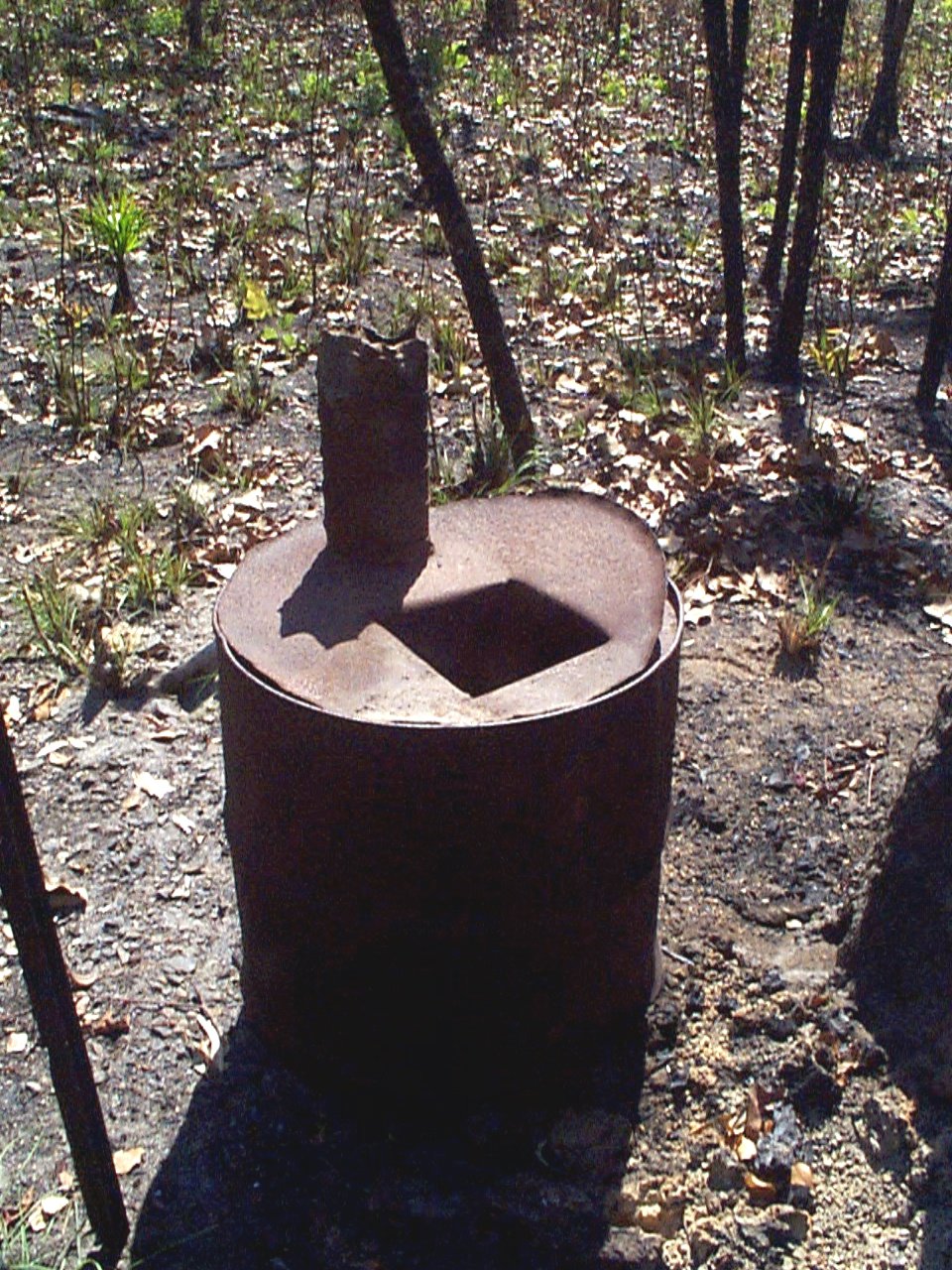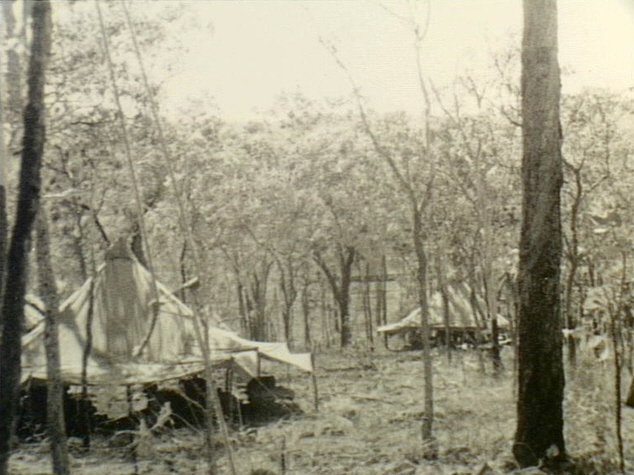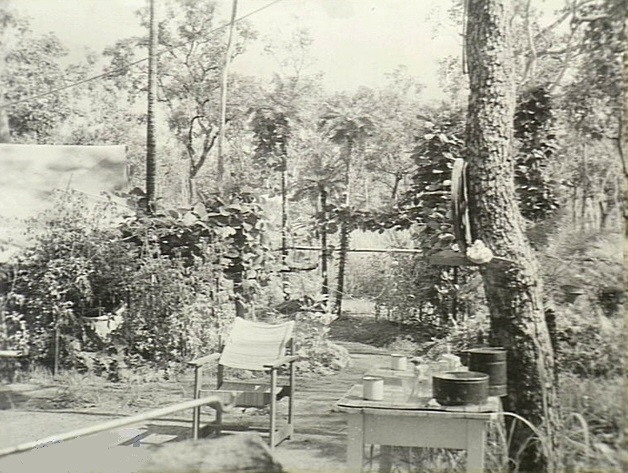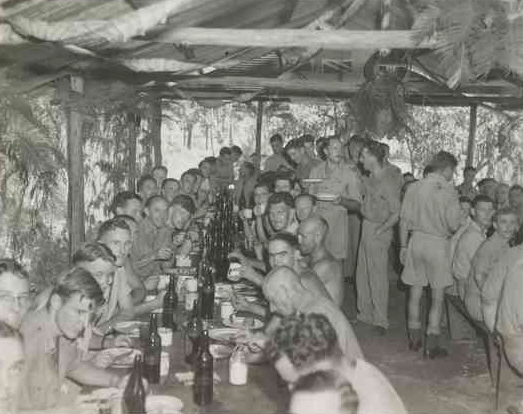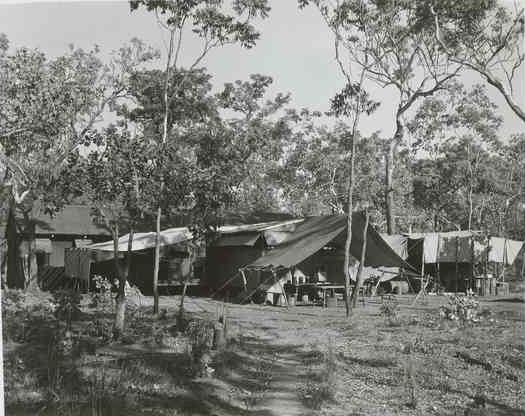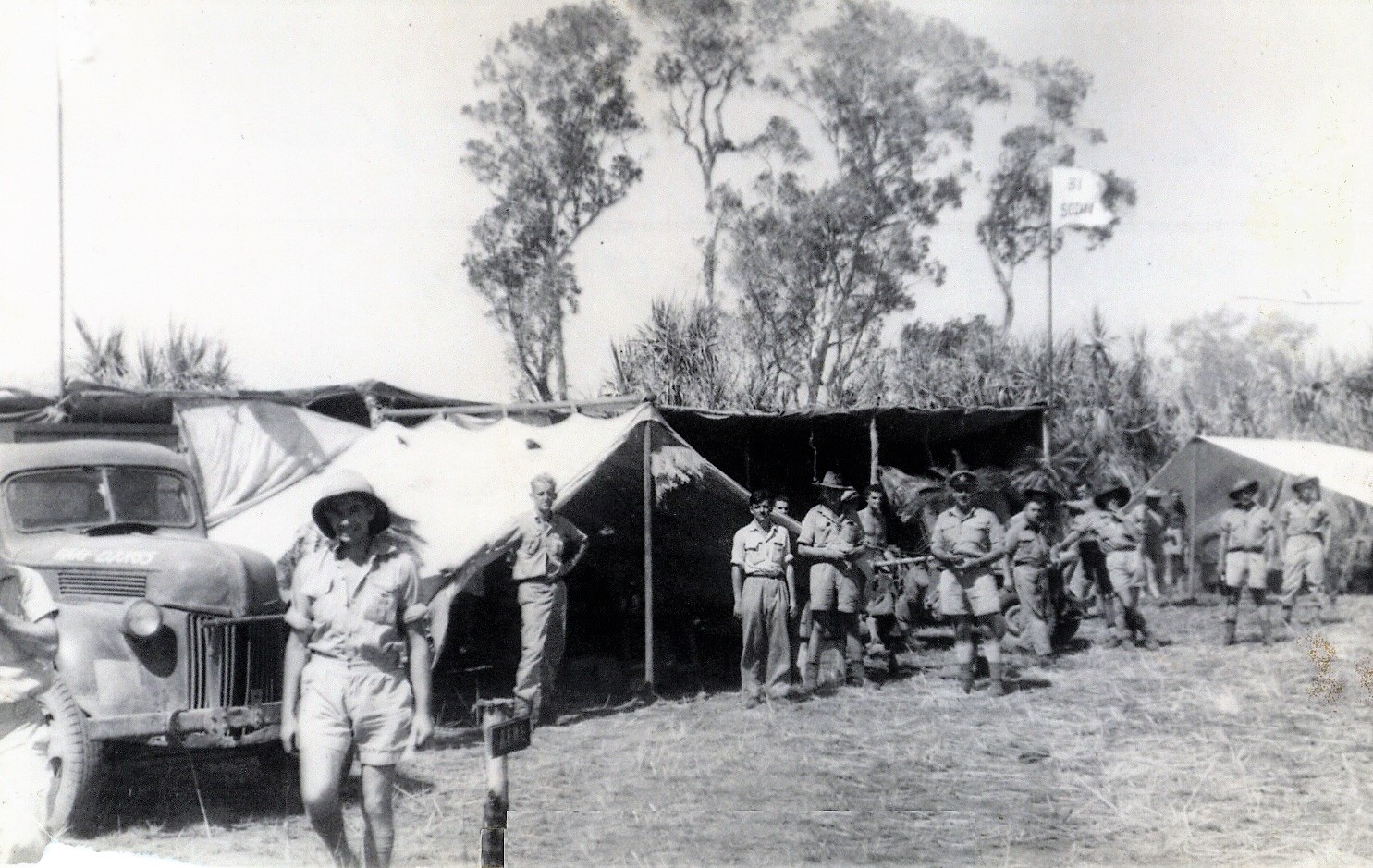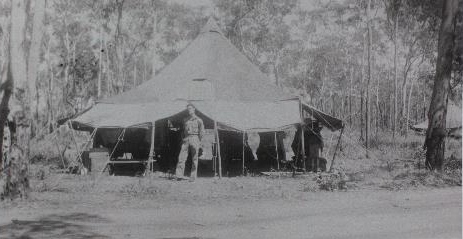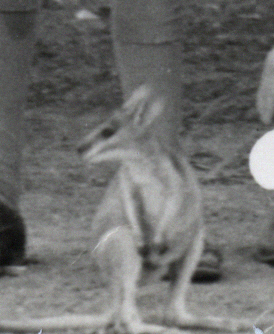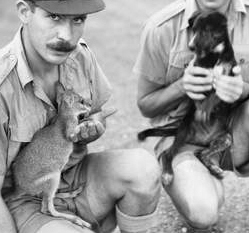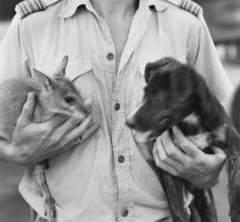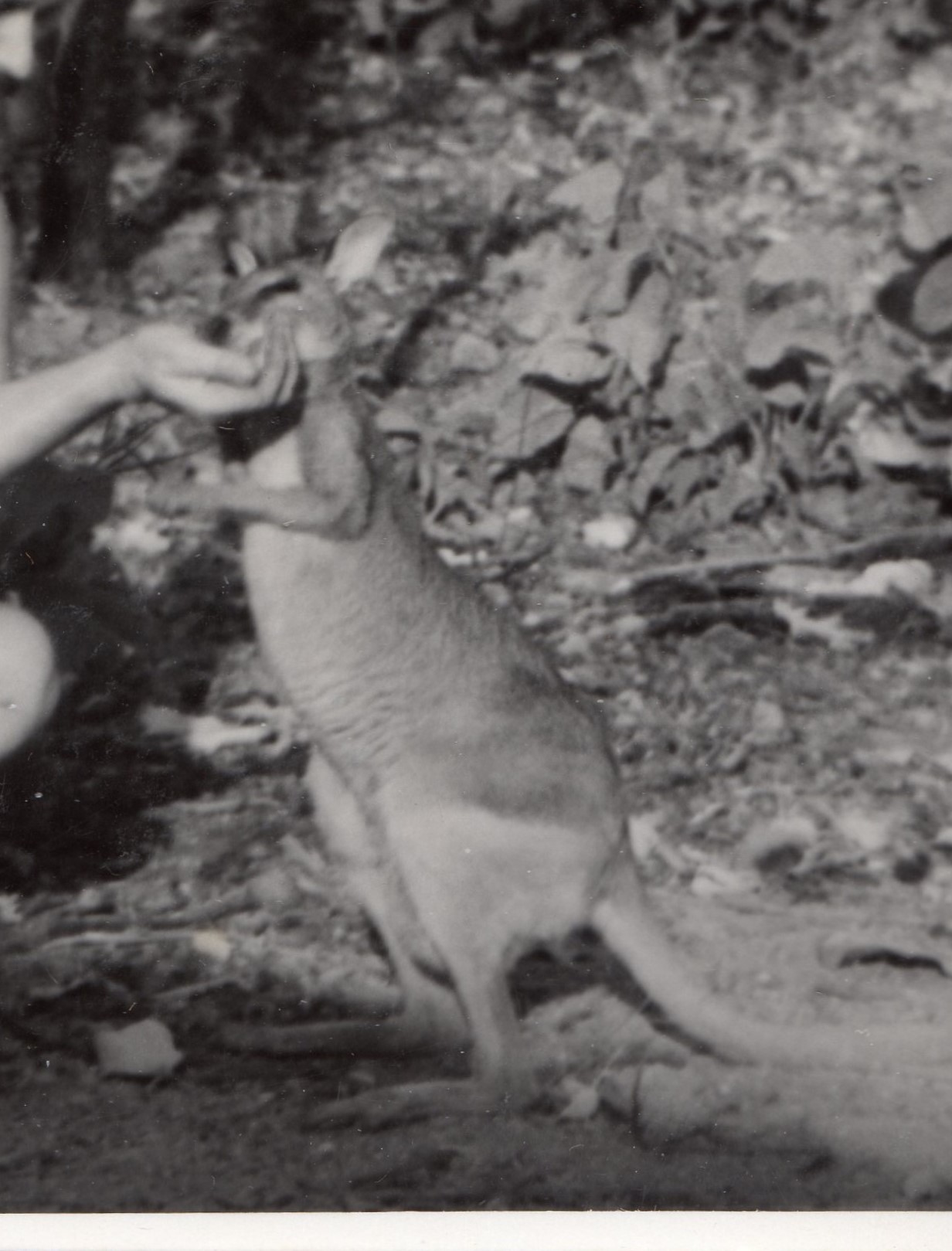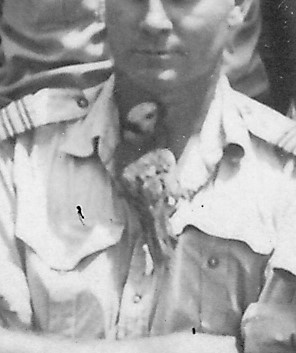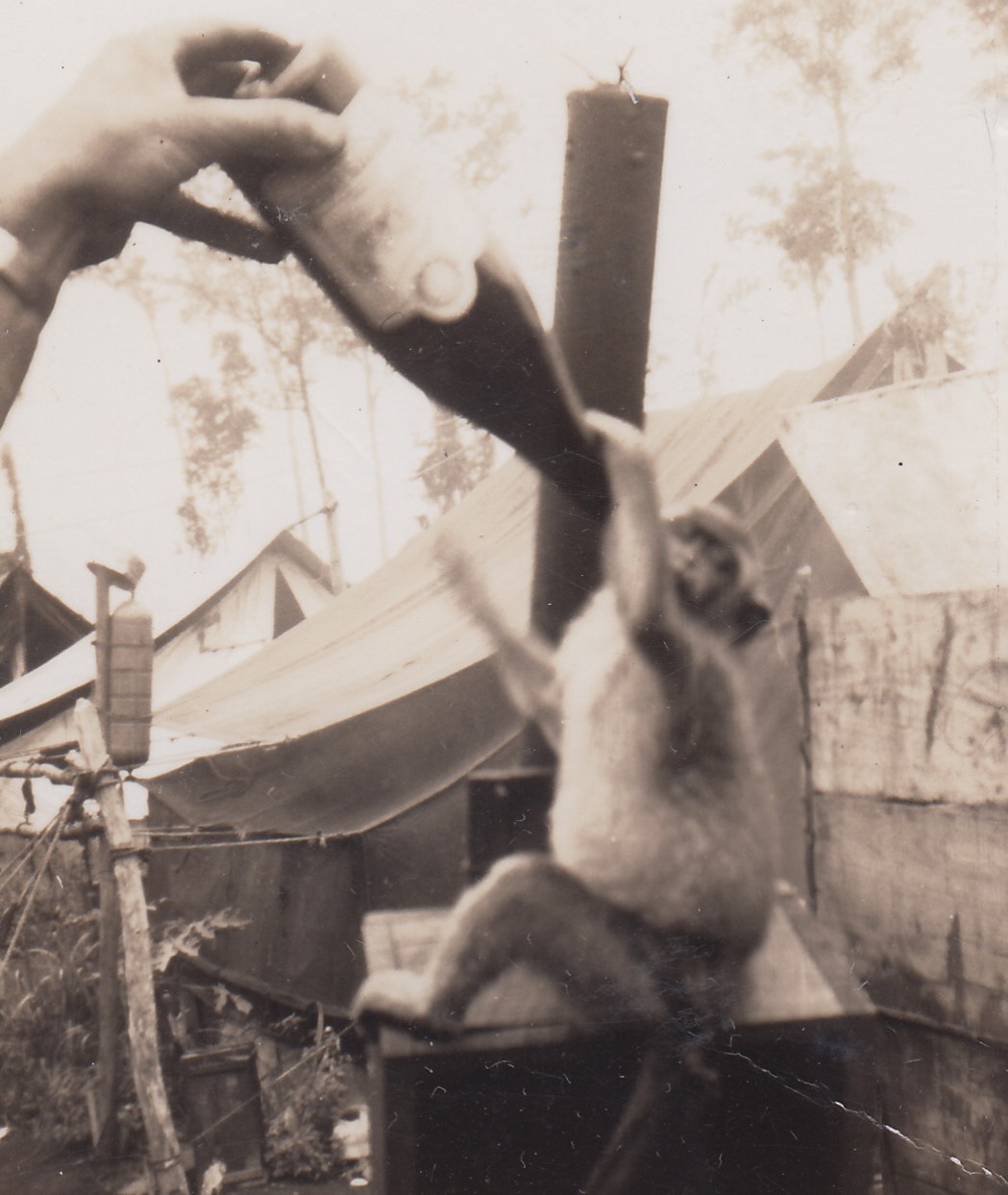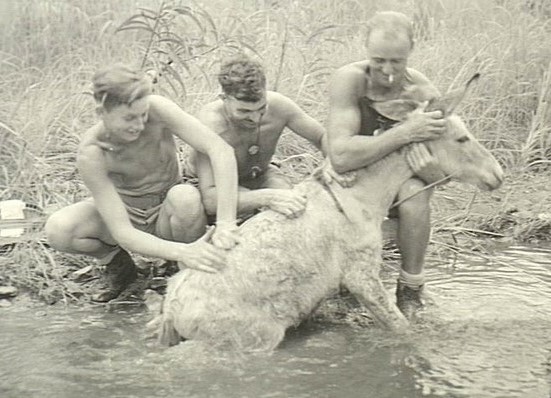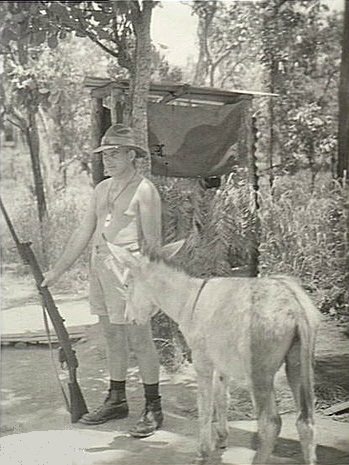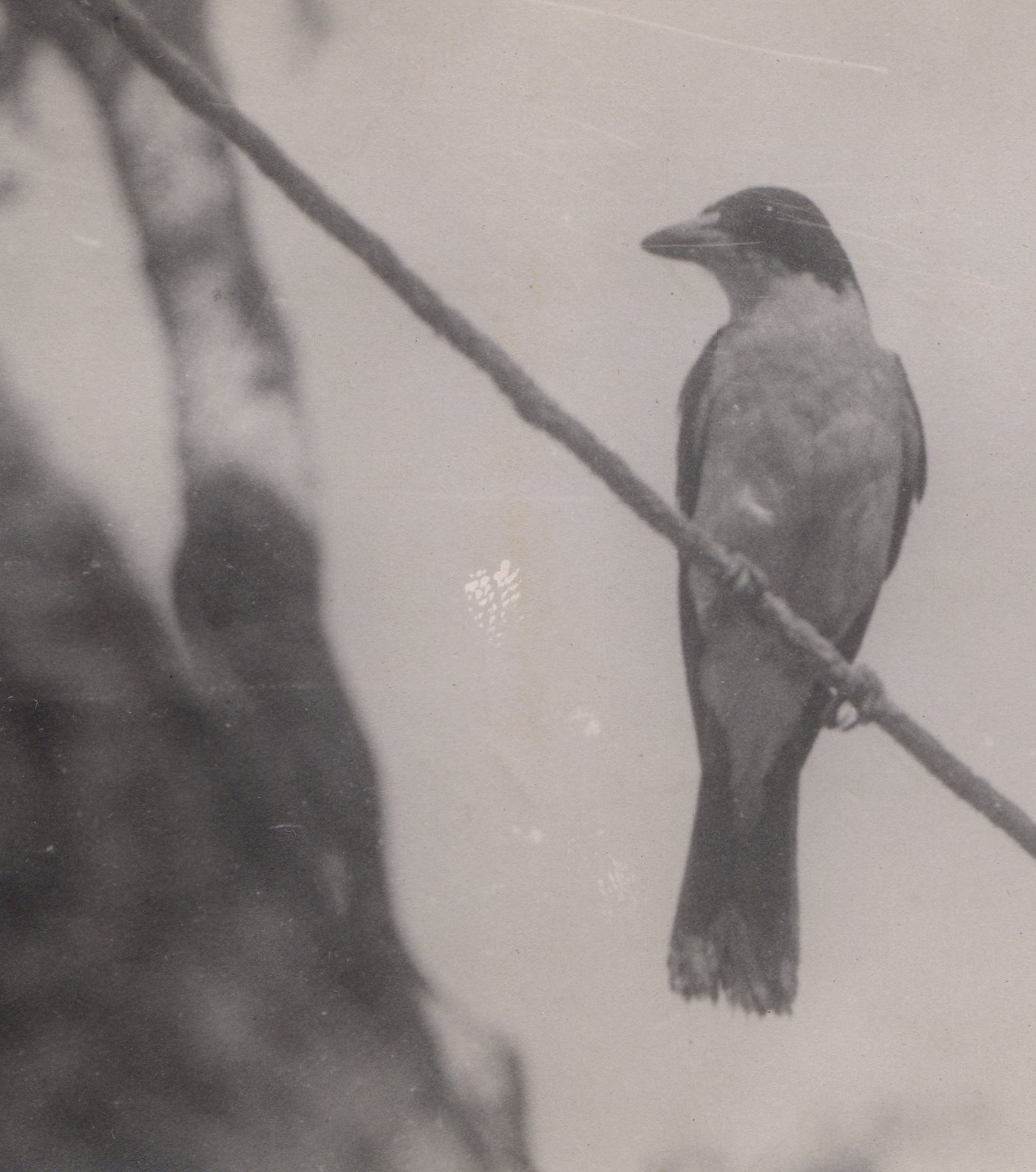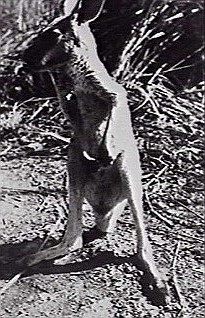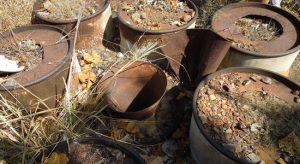Coomalie Creek
Coomalie Creek Airfield History

Coomalie Creek airfield was and still is, a World War 2 airfield located in the Northern Territory approximately 90 klms south of Darwin and 15 klms from Batchelor airfield.
This Documentary was produced by Erik Iverson & Xander Rose. They were part of a group of students from America who came to study the Redback Fairy Wren that was known to be habitating at Coomalie Creek Farm.
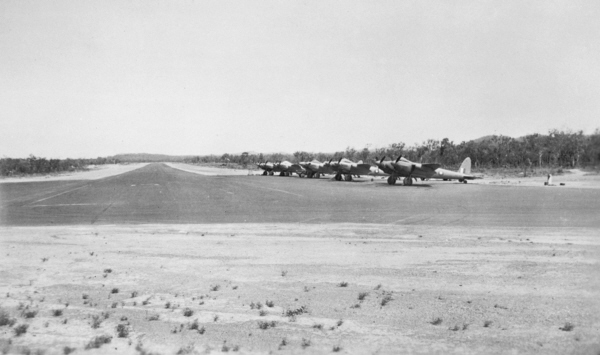
Almost the same photo as above with Mosquitos from No 87 Reconnaissance Squadron lined up on the Strip.
In the first weeks in November 1942 when 31 Squadron arrived at Coomalie Creek with their Beaufighters, the airfield was still very new, and the workmen were still finishing off the earthworks and a few essential camp buildings. Aircraft had to take care not to collide with machinery or workmen. Each sqn member erected his own tent and dug his own slit trench. That is where they stayed for the duration of their tour. The only essential small buildings were the mess areas, cookhouses, and a storeroom.
Below are photos of some of the rudimentary amenities. In the early days they were whipped up by the Squadron members themselves and as the years went by, were improved as necessary. Sometimes the use and position of the buildings was changed to accommodate different needs and uses.
These are some Campsite photos
Mascots and Wildlife at Coomalie
The following is a list of Units that were either stationed at, or had past through Coomalie Creek from 1942-1945
The list is not definitive however, if anyone has information relating to any of these units or others that were at Coomalie please let us know.
As more information about these units comes to hand, they will be updated.
NO 12 SURVEY DESIGN UNIT
Parent Unit; 61 Wing
This Unit undertook field surveys, design and architectural work.
NO 61 WORKS WING AIRFIELD CONSTRUCTION
Subordinate Units 1, 3 & 8 Airfield Construction Squadron. 1, 3 & 8 Works Maintenance Unit. 1, 3 & 8 Mobile Works Units. 9 Mobile Works Unit, 9 Works Maintenance Unit, 11 Works Supply Unit, 1 Survey and Design Unit. The Unit was established at Camp Pell, Royal Park, and Victoria, on 7th January 1943. It was created as an administrative unit to oversee the RAAF construction units in the Northern Territory.
NO 1 AIRFIELD CONSTRUCTION SQUADRON – (1 MOBILE WORKS SQUADRON)
Parent Unit – 61 Works Wing (Airfield Construction) Engineers Arm. Formed at Ascot Vale in Victoria on 6 April 1942. Moved to Flemington 20 April 1942. Moved to Pine Creek 6 July 1942. Soon after went to Coomalie.
Renamed 1 Airfield Construction Squadron 20 July 1944. Departed for Morotai 22 January 1945. Departed Morotai for Tarakan 27 April 1945. Disbanded 30 November 1945.
NO 3 MOBILE WORKS SQUADRON – (3 WORKS MAINTENANCE UNIT
Parent Unit – 61 Works Wing (Airfield Construction) This unit was renamed several times but while at Darwin this name was used. The headquarters remained in Darwin but detachments worked on a number of airstrips in the Northern Territory. It was disbanded October 1945
NO 9 AIRFIELD CONSTRUCTION SQUADRON
Alternative Unit Name; 9 Works Maintenance Unit
Originally formed as 9 Works Maintenance Unit. The Squadron deployed to the Northern Territory July 1943. There were detachments at Larrimah, Livingstone, Strauss, Hughes, Coomalie Creek, Darwin and Howard River. They were bombed 12 November 1943 by a single aircraft. Men from the Unit were posted south from September 1944. They went on to serve in Balikpapan, on the east coast of the island of Borneo, in the Indonesian province of East Kalimantan. The Squadron was disbanded 15 December 1945
NO 14 MOBILE WORKS SQUADRON
Parent Unit – 61 Works Wing (Airfield Construction) The Unit was formed as 14 Mobile Works Squadron 20 July 1943 by splitting 1 Mobile Works Squadron into 2 units. It was reformed at Ransford in Victoria 5 January 1944. They operated from Coomalie and Winnellie in March 1944 before moving to Truscott in Western Australia by May 1944. On 15 September 1944 they landed in Morotai.
NO 1 MEDICAL RECEIVING STATION RAAF (Medical Arm)
This Unit was formed at Daly Waters on the 23 March 1942. Initially equipped with a mobile surgical van donated by the Prahran Patriotic Society in Victoria. The Unit moved to Coomalie Creek in August 1942 where they experienced their first raid. On 16 February 1945 the Unit moved to Nightcliff. Disbanded February 1946.
No 1 PHOTO RECONNAISSANCE UNIT RAAF (Recon Arm)
The Unit was formed at Laverton in Victoria June 1942. Initially it was issued with 6 Brewster Buffalos but these were replaced with 2 F4 Lockheed Lightnings in October 1942. The Unit was renamed, 87 Photo Reconnaissance Squadron RAAF. It flew; Buffalo, Lancer, Lightning, Wirraway, and Mosquito.
31 SQUADRON.
Parent Unit 77 Wing RAAF — 79 Wing RAAF ( Fighter Arm)
54 OPERATIONAL BASE UNIT
Logistics branch that was established at Hughes in June 1942. Moved to Batchelor in October 1942. Moved to Coomalie Creek November 1942, and finally to Venn in February 1943. Disbanded March 1943
NO 2 RESERVE PERSONNEL POOL RAAF
Alternative Unit Name 2RPP. The Unit was formed at Coomalie Creek July 1944 and moved to Winnellie 19 September 1945 before being disbanded on 30 January 1946.
90 BOMBARDMENT GROUP
Subordinate Unit – 319 Bombardment Squadron U.S.A Bomber Arm.
319 Squadron of this Group flew from Iron Range in Queensland to Fenton in January 1943. They flew long range bombing missions in B24 Liberators against the Japanese from Fenton. A number of crews from 320 Squadron were attached to 319 during their deployment in the Northern Territory.(Coomalie)
NO 51 WIRELESS SECTION
Parent Unit; Australian Special Wireless Group
Camped at Coomalie Creek between 1942 and1945. Main role to intercept and record Japanese Army, Navy, and Air Force Kana Signals. Their intercepts were sent to the navy cryptology section in Melbourne via RAAF Signals Darwin. They enciphered their messages to Melbourne in a secret cipher before passing them over to the RAAF Signals personnel. This ensured that their intercepts of Japanese Kana code or encoded messages were not apparent to other military personnel to protect the secrecy of their intercept operationThe Unit played a huge role in the warning of impending Japanese attack on Darwin and shortening the war in the Pacific.
NO 2 WIRELESS UNIT (Signals Arm)
This unit monitored Japanese Wireless signals
NO 3 WIRELESS UNIT (Signals Arm)
This unit also monitored Japanese Wireless transmission
NO 11 SIGNALS UNIT
The Unit was formed on 6 December 1942. It arrived at 57 1/2 mile 21 January 1943. Personnel from the Unit served in the Cox Peninsula – Groote Eylandt – Fenton – Batchelor – Gove – Truscott – Coomalie – Tindal – Gorrie and Darwin erecting cable and aerial system buildings and installing radio equipment. The Unit was disbanded 22 August 1944.
NO 8 WIRELESS TRANSMISSION STATION
Previously been a detachment of No 11 Signals Unit. Other names are; North Western W/T Station – NWA HQ telecommunication Unit – NWA Telecommunications Unit – Darwin Signals Unit. The Unit was formed 15 July 1944. It had a number of name changes over the course of its life before disbanding February 1946.
NO 112 LIGHT ANTI-AIRCRAFT REGIMENT
Subordinate Units; 160 Light Anti-aircraft Battery. 161 Light Anti-aircraft Battery. The Regiment was raised at Healeseville Victoria. The Regiment took over the guns from the departing 2/1 Light Anti-aircraft Regiment.
NO 2/1 LIGHT ANTI-AIRCRAFT REGIMENT
Subordinate Units; 2/1 Light Anti-aircraft Battery. 2/2 Light Anti-aircraft Battery
Formed in Egypt from 2/1 Heavy Anti-aircraft Battery on 22 August 1941,it was equipped with Bofors guns and served in Syria and Egypt. On 31 January 1942, the unit embarked on the Orcades. They disembarked at Sumatra but immediately rejoined the ship because Singapore had fallen. They disembarked at Adelaide on 15 March 1942.
An advance party left by air for Darwin on 24 March 1942. By early April, the Unit was providing defence at the Civil and RAAF Dromes and at Hughes Field. On 4 April, 2 battery guns were in action and credited with downing two Japanese Zeros. 1 Battery was first sited at Batchelor where the Headquarters was also located. They fought side by side with the machine gunners of the US 102 Anti-aircraft Battery.
In June 1943, they handed over their guns and equipment to 112 Light Anti-aircraft Regiment and 149 Battery and returned to Sydney prior to embarking for New Guinea. They were at Hughes and Coomalie Creek between April 1942 to June 1943
NO 2/2 LIGHT ANTI-AIRCRAFT BATTERY
Parent Unit; 2/1 Light Anti aircraft Regiment. This Battery had 9 guns deployed at Batchelor and 2 at Pell Field, 65 Mile.as well as Coomalie. On 30 July 1942, the 2/1 and 2/2 batteries exchanged locations. The Unit reached Sydney by 25 June 1943 and were given leave.
NO 160 LIGHT ANTI-AIRCRAFT BATTERY
Parent Unit; 112 Light Anti-aircraft Regiment. The Unit arrived in the Northern Territory on 15 June and took up a position at Coomalie to relieve the 2/2 Light Anti-aircraft Battery.
NO 153 LIGHT ANTI-AIRCRAFT BATTERY
Parent Unit; 54 (Composite) Anti-aircraft Artillery Regiment. The Battery was originally located at Kensington in Sydney. It moved to Coomalie on 18 November 1943.
NO 149 LIGHT ANTI-AIRCRAFT BATTERY
Parent Unit; 101 Anti-aircraft Regiment. 108 Light Anti-aircraft Regiment. The battery was based in Newcastle. It arrived at Terowie on 30 May 1943. Ray Buttery was part of this Unit. A and C Troops were based at Coomalie. B and D Troops were at Fenton field. In June 1943, they received two extra guns from 233 Light Anti-aircraft Battery. They were bombed for the first time at Fenton on 30 June 1943.
NO 155 LIGHT ANTI-AIRCRAFT BATTERY
Parent Unit; 149 Light Anti-aircraft Regiment. This Unit provided reinforcements to 149 Light Anti-aircraft Battery. June 1943
NO 16 INFANTRY BATTALION
Parent Unit; 13 Brigade. The Battalion was known as the Cameron Highlanders of Western Australia. It departed from Darwin on 21 November 1944 on USAT Evangeline for service in New Britain. They were at Coomalie between March 1943 to November 1944.
Toilets were fabricated from 44 gallon drums that were dug halfway into the ground. Sometimes in a circle or 2 or 3 at a time.They had flat tin lids with a hole cut out, a few funnels, and were initially in the open.
An orderly room, sick quarters and an operations/intelligence room were built using voluntary labour.
The slit trenches were built in case of Japanese air raids. 31 Squadron flew their first operational mission out of Coomalie Creek on 17 November when six Beaufighters made strafing attacks on Moabissi and Bobanaro on Timor
In late November 1944, three C-47′s from 34 Squadron RAAF were detached to Coomalie airfield.
34 Squadron started to move to Morotai on 15 February 1945. They became fully operational at Morotai on 12 April 1945. The C-47′s from 34 Squadron RAAF assisted in the move of 31 Squadron from Coomalie Creek to Noemfoor Island on 1st December 1944 and then to Morotai on 7th December 1944.
THE CHAPEL
ANGLICAN priest Ian McDonald says he knows what indigenous people mean when they talk of “sacred country”: some places just have a strange kind of power, he muses. And this simple chapel at Coomalie Creek, 80km south of Darwin, is one of them. It’s “very peaceful, very moving”, he says; there’s a profound silence that’s punctuated only by occasional birdcalls. It was a different story during World War II, when RAAF Mosquitos and Beaufighters were flying out of nearby Coomalie airfield bound for Timor and Indonesia on bombing and reconnaissance missions. At its height, the camp that sprang up in the bush 2km from the airfield (where the trees afforded some cover from Japanese planes) was home to 450 RAAF personnel. In 1943 they built a small chapel in the camp.
ORIGINAL SQUADRON CHAPEL
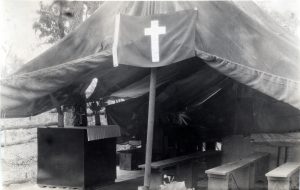
Soon after, a more permanent structure was built
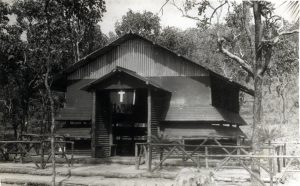
Bush Chapel service

That original chapel is long gone due to fires, white ants and the elements, but in 1992, a replica was built on the very same spot by the present owner Richard Luxton.

For the past decade, Rev McDonald has led a service there on the Sunday closest to August 15.
That date, VJ Day, (victory over japan day), has a special significance for Coomalie. It was from here that the RAAF flew its last sortie of the war (a single Mosquito was halfway to Timor on a reconnaissance mission when Japan’s surrender was announced; the pilot was radioed to return home and performed a spectacular low pass over jubilant scenes at the airfield). Reverend McDonald, says the event’s popularity “has grown and grown”.
Dozens of people now arrive by 4WD or vintage plane – it is still an active airfield – from all over Australia. This year the service included a prayer written by the wartime chaplain, Bill Dunbar, for his congregation on Christmas Day in 1943. You might think a chapel with no walls would be a novel experience for Rev’ McDonald, but in fact his regular church at Freds Pass near Darwin is similarly open to the elements. It sounds pretty quirky. “We get birds flying around our heads during services,” he says. “And sometimes I’ll be giving the sermon and I’ll notice that everyone has stopped paying attention – they’re all looking at a wallaby outside.” What does he do in that situation? “Oh, I’ll look at the wallaby too.” – See more at:
http://www.theaustralian.com.au/news/features/coomalie-creek-0822/story-e6frg8h6-1226158366381#
Coomalie Creek Chapel Restoration – Richard Luxton
An article in THE AUSSIE MOSSIE page 7 by Richard Luxton who is the author of this article and the owner of Coomalie Farm which incorporates the Coomalie airstrip. Written in 2005
“Fifty years ago, when Darwin and its surroundings were in the front line of World War II, the airmen of the RAAF’s 31 Squadron, a Beaufighter unit, were saving to build a bar. What event changed their minds is not recorded, but one of their number a pilot named Butch Gordon, approached Padre Dunbar and told him they had decided to build a chapel instead. The result was of bush timber, clad in corrugated iron, the floor was Compacted earth and the altar steps made from bush stone.
The building was opened in December 1943 with a Cello recital as no organ was available. It was used regularly for services until the end of the war. Bushfires, termites and the climate of the top end took their toll and 50 years on only a photograph of the building, the altar steps and a few sheets of iron remained.
The site of the chapel, the airstrip and taxiway are on Coomalie Farm which I have been developing for the last 25 years between construction projects and lecturing. After meeting many former members of 31 Squadron the decision was made to rebuild the chapel.
Working from a single photograph and the known width of the altar steps, Marc Christianson at the University redrew the building, scaling from the photograph by counting the corrugations on the wall and roof claddings. When excavating footing holes, for the supporting columns (this time of steel to counter fire and termites) charcoal from the original columns was found, proving we had the dimensions correct. As the frame went up and further photographs were unearthed by 31 Squadron members, we found that two trees next to the building were still there after 50 years.
The construction involved students and staff of the University’s Department of Architecture and Building in working weekends with Mark Smith and Andrew Schulze doing a superb job with the metal fabrication and carpentry. The simple form blends in with the environment and has captivated Architects and designers interested in creating buildings suitable for the tropics. In 1993, the project was entered in the Northern Territory Architecture Awards held by the Royal Australian Institute of Architects and was awarded the J.G. Knight Conservation Award. From there it went to the National Architecture Awards in Sydney and earned the Jury Special Award.
The restoration project is completed and we have identified a nearby concrete slab complete with garden beds and pathways as being the hospital. We are starting on rebuilding this site and it will be available to community groups. Members are very welcome to visit. The airstrip takes aircraft up C130 Hercules….. if you happened to have one.”
MEMORIAL SERVICE 2014
